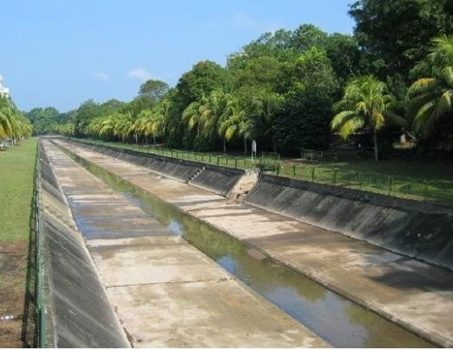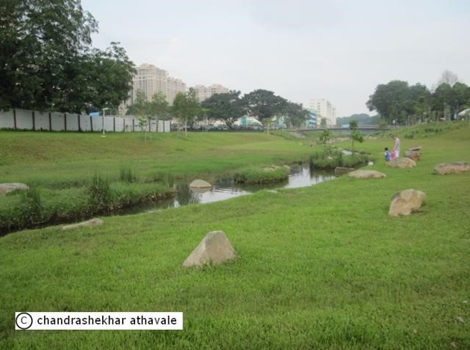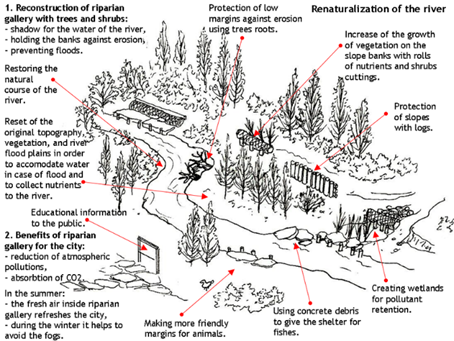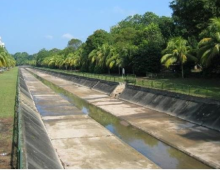- Riverbed material renaturalisation
Streambed (or riverbed) represents the bottom of the river, including each bank. In the past, riverbeds have been artificially modified with concrete or big boulders, altering flows and reducing habitat for wildlife and vegetation diversity. The changes were aimed at preventing flood or supporting changes of agricultural practices for example. This has led to more uniform flows in the rivers and has often had the effect of reducing travel time along the river. Streambed renaturalisation involves the removal of some concrete or inert structures in the riverbed and on riverbanks, and their replacement with vegetation structures, in order to prevent these damages and restore biodiversity.

River before renaturalisation
Source: Chandrashekhar Athavale

River after renaturalisation
Source: Chandrashekhar Athavale
Stream bed renaturalisation
This re-naturalisation of river beds and banks can have a high impact on the erosion process. Stabilisation techniques are one of the most important measures to be implemented. The maximum impact is achieved when the stabilisation technique restores the vegetation cover and the naturalness of the banks. Most of the time, techniques use plants for bank stabilisation. These techniques can be grouped into two categories according to their level of complexity:
Bank re-naturalisation
Plant engineering
Bank re-naturalisation is a stabilisation technique used to correct minor erosion problems and that does not require a high level of expertise to implement
Plant engineering is defined as techniques that combine the principles of ecology and engineering to design and implement slope, bank and embankment stabilisation works using plants as raw materials for the production of vegetable frames.

Attempts to keep the river banks natural by its renaturalisation, using various means of garden architecture
Source: Wlodarczyk and Mascarenhas, 2016
Riverbed material renaturalisation
Riverbed material represents the sediment eroded upstream, transported by the river and deposited on the river floor. It can be composed of coarse and/or fine material. Its re-naturalisation consists in recovering the nature-like structure and composition of the bed load, in particular the equilibrium between coarse and fine sediment. In case of deficit of coarse sediment leading to river incision, the main objective is to level-up the riverbed with this type of sediment, by reactivating bank erosion in terrains contributing to this type of sediment.
It should be noticed that in case of excess of fine sediment causing inundations, silting of hydro-electric dams or degradation of fish habitats, the main objective is to control erosion on slopes and riverbanks providing this type of sediment.

Before and after restoration Munich's Isar riverbed (DE)
Source: Syndicate de la Seich
